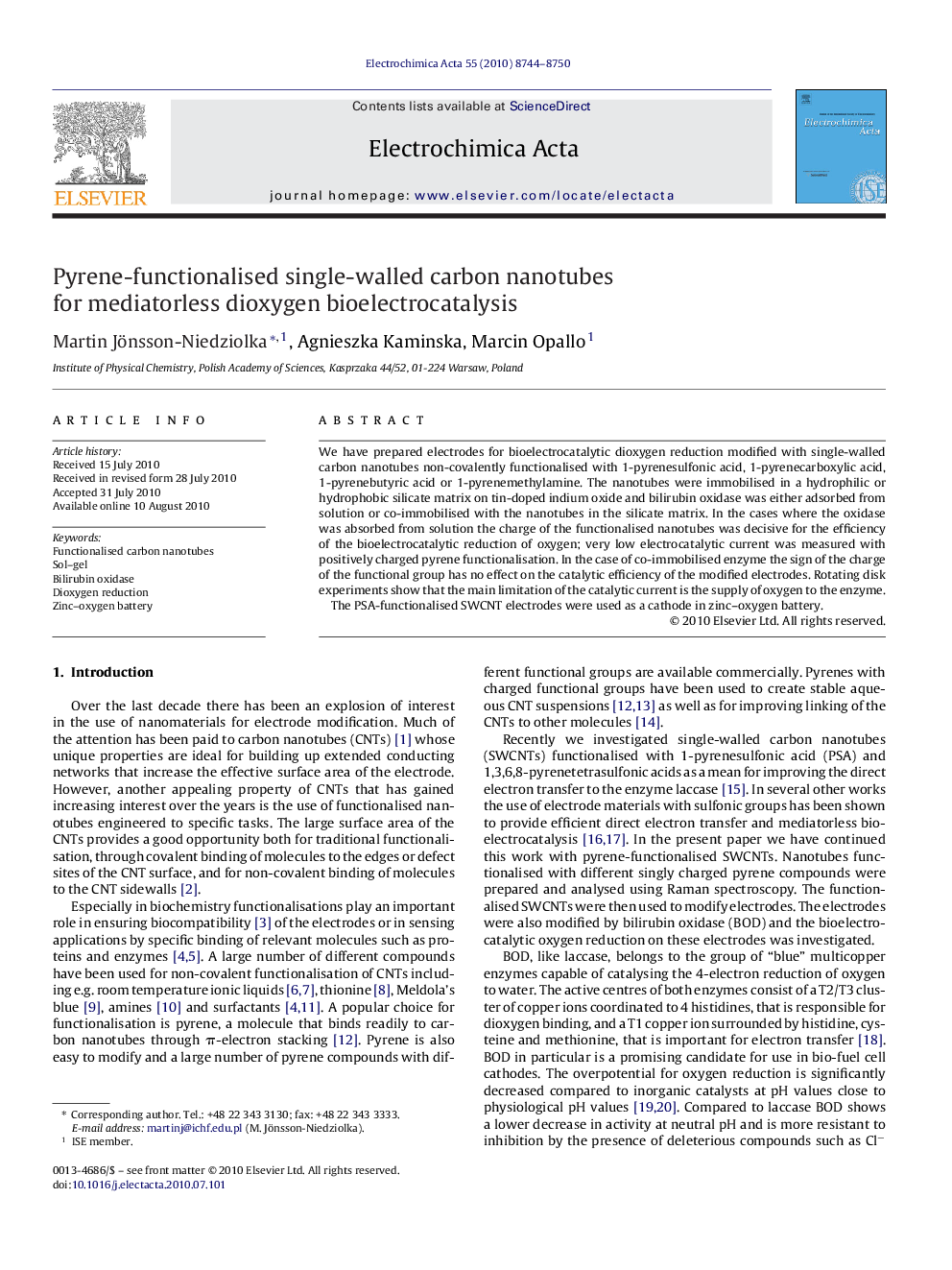| Article ID | Journal | Published Year | Pages | File Type |
|---|---|---|---|---|
| 190034 | Electrochimica Acta | 2010 | 7 Pages |
We have prepared electrodes for bioelectrocatalytic dioxygen reduction modified with single-walled carbon nanotubes non-covalently functionalised with 1-pyrenesulfonic acid, 1-pyrenecarboxylic acid, 1-pyrenebutyric acid or 1-pyrenemethylamine. The nanotubes were immobilised in a hydrophilic or hydrophobic silicate matrix on tin-doped indium oxide and bilirubin oxidase was either adsorbed from solution or co-immobilised with the nanotubes in the silicate matrix. In the cases where the oxidase was absorbed from solution the charge of the functionalised nanotubes was decisive for the efficiency of the bioelectrocatalytic reduction of oxygen; very low electrocatalytic current was measured with positively charged pyrene functionalisation. In the case of co-immobilised enzyme the sign of the charge of the functional group has no effect on the catalytic efficiency of the modified electrodes. Rotating disk experiments show that the main limitation of the catalytic current is the supply of oxygen to the enzyme.The PSA-functionalised SWCNT electrodes were used as a cathode in zinc–oxygen battery.
